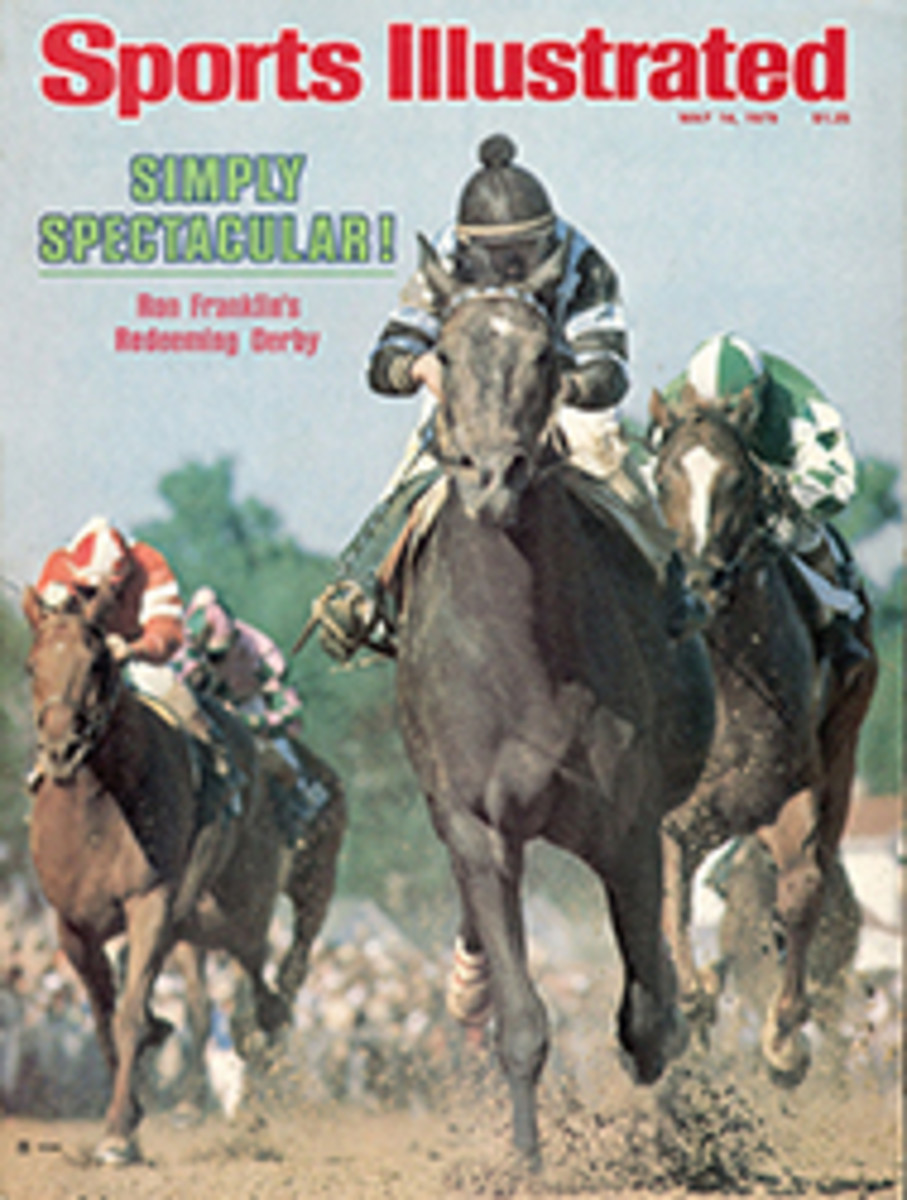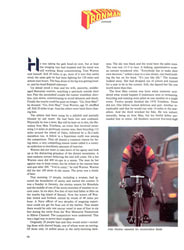
THE SPHAs DID SOME FANCY STEPPING DOWN AT THE BROADWOOD BALLROOM
Back in 1918, when residents of South Philadelphia's lower-middle-class ethnic pocket were loath to spend their hard-earned dimes on anything beyond sustenance, three recent high school graduates decided to start a semipro basketball team. Eddie Gottlieb, Harry Passon and Hughie Black wanted to go on playing their favorite game while casting about for their true careers. They proposed the idea to the South Philadelphia Hebrew Association's board of directors, and when the board agreed to spring for uniforms, the young basketball entrepreneurs were on their way.
"We split receipts just like kids who have bands today do," says Gottlieb, whose Philadelphia Warriors were one of the early teams in the National Basketball Association and who, at 77 plus, still makes up the NBA schedules each year. "We got maybe five bucks apiece each game, but we were all working besides. We were going to be lawyers and doctors or whatever young Jewish boys were going to be in those days, not basketball players. We were just having fun."
By 1921 the fun had become lucrative enough for Gottlieb, Passon and Black to take over sponsorship of the team from the South Philadelphia Hebrew Association and to supply the team uniforms. Philadelphia Inquirer sportswriter Bill Scheffer nicknamed the club the SPHAs (pronounced "spahs") for the association's initials that the players still wore on their shirts.
"There were a lot of Catholic teams around for us to play," says Gottlieb. "The SPHAs represented the Jewish community. It was a togetherness thing."
The SPHAs added Babe Klotz from Girard College, a school for fatherless boys, and Manny Davidson, who later manufactured foam-rubber cushions, and in 1921-22 won 32 of their 36 home games. That was good enough to get them admitted to the Philadelphia League, a newly formed pro conference. Then they imported a 5'6" guard named Davey Banks from New York, paying him a whopping $50 a game.
Banks led the SPHAs to league championships in 1924, 1925 and 1926, with his finest effort coming in a best-two-of-three series with the Original Celtics in 1926. The SPHAs lost the first game, but Banks' 30-footer with 30 seconds remaining in the second game beat the supposedly unbeatable Celtics 26-25. Banks scored a game-high 11 in the final game as the SPHAs won again, 36-27. When the Celtics signed Banks for the 1926-27 season, the SPHAs had to regroup.
"It wasn't all that hard," says Gottlieb. "At that time, Jewish players dominated the game the way blacks do today. Basketball was their big game."
In 1929, after combing the Philadelphia YMHA Jewish Amateur League for new young talent, Gottlieb came up with two gems. One was Harry Litwack, a 5'8" All-America guard from Temple with hands so lively he could, according to one old SPHA rooter named Albert Wahl, steal the pants off an opponent and discount them three times on the way to the basket. Litwack went on to coach Temple basketball for 21 years.
The other find was David (Cy) Kaselman, a 5'11" forward who is still acclaimed by SPHA experts as the best all-round basketball player to come off Philadelphia courts.
"Cy was the best," says Dave Zinkoff, the frog-voiced P.A. announcer for the Philadelphia 76ers who started his career writing the SPHAs Sparks program. "There was nothing like him in shooting those rainbow set shots or grabbing rebounds from men eight inches taller. Cy could dribble past the big men and score over the small. The greatest."
With holdover Chick Passon, who was Harry's brother, Gottlieb added Lou Forman of Dickinson College and Yock Welsh, plus two New York stars, George (Red) Wolfe of St. John's and Babe Lyman of NYU, and led the SPHAs into the Eastern Professional League, where the best basketball of the early '30s was being played. After the SPHAs won three league titles in four years, they were asked to join the new American League, the crème de la crème of pre-NBA pro basketball.
By that time the SPHAs had become the toast of Philadelphia's Jewish community. Though not a religious organization by any means, the team was a focus of what is often called social Judaism. It wore "Jewish blue" uniforms with Hebrew characters emblazoned across the front. After Gil Fitch, a 5'11" forward from Temple, joined the club for the 1932-33 season, every game was followed by a dance with music provided by the Gil Fitch Orchestra.
"By the time we started the dances," says Gottlieb, "we had moved to the Broadwood Hotel, where the Philadelphia Athletic Club now stands, and played our games in their ballroom. A lot of fans met their future wives and husbands at SPHAs games. The admission was low, never more than $1.25, and women got in even cheaper. At the time Jewish parents weren't keen on letting their daughters go to public dances, but at a SPHAs game they might meet a nice Jewish boy and...."
And see one heck of a basketball game. From 1933 to 1946, when the NBA (nèe the BAA) was founded, the SPHAs won seven of 14 American League titles.
Perhaps the most memorable league championship was in 1937. The SPHAs were down 3-1 in the best-of-seven series to the Union City (N.J.) Reds and, at one point, were behind by 10 points in the fifth game. But they rallied to win 34-33 when Kaselman hit a free throw with 10 seconds to go. Moments later, a Union City forward charged into the jeering crowd at the Broadwood, and punched a fan, starting a melee. The SPHAs went on to tie the series 3-3 with a 45-32 victory. The final game had to be played in the Philadelphia Arena in order to accommodate the crowd. The score was 38-38 at the end of regulation play when anti-Semitic hollering started.
"We got a lot of it, but that anti-Jewish stuff didn't bother us much," says Gottlieb. "We got it bad sometimes, but we were tough and rugged guys and didn't listen." Listen or not, a fired-up Red Rosan scored two field goals and sank a free throw to open up a five-point lead in overtime, and the SPHAs won the game 43-42, and the championship.
During World War II, Gottlieb found it necessary to recruit non-Jews for the SPHAs. Art Hillhouse, a 6'8" center from Long Island University, and George Senesky of hometown St. Joseph's, who later became a forward and coach for the Philadelphia Warriors, came in during the 1943 season.
In 1947 Gottlieb founded the Philadelphia Warriors of the new BAA, with a nucleus of SPHAs and other pros. Petey Rosenberg told Gottlieb about a gentile troopmate at Pearl Harbor who could play a mean court game—Joe Fulks. Fulks became the first big star of the BAA—and it's successor, the NBA—averaging 23.2 points per game and leading the Warriors to the BAA championship over the Chicago Stags in 1947.
By this time the SPHAs were only a pale reflection of earlier teams. They shilled for a time as tour "opponents" of the Harlem Globetrotters and then, in the early '50s, disbanded.
"But it sure was a lot of fun," says Gottlieb. "We stayed around so long because we were one of the few teams of that era to make money. And we made money because we developed a following, the second-generation Philadelphia Jews. I remember we gave out suits to a lucky-number ticket for a while. One girl told her date that she would marry him if he won the suit. Sure enough, he won it. I guess they got married. That's the kind of team we were."
ILLUSTRATION

